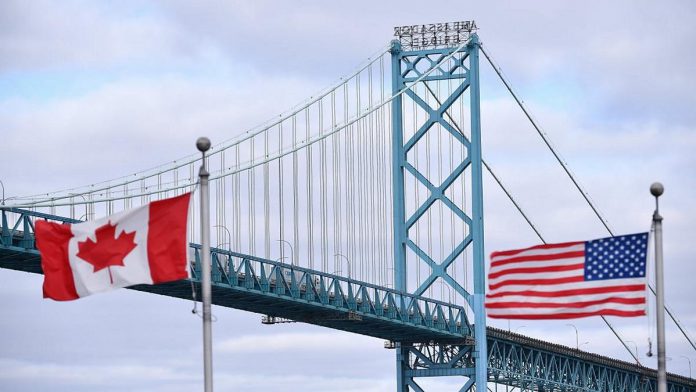
In response to the U.S. threat of tariffs on Canadian goods, Northumberland County Warden Brian Ostrander has been working on correspondence to politicians in two states and intends to take further action in the weeks ahead.
“I have sent letters to the heads of council in every county and region in New York plus Pennsylvania’s Northumberland County,” Ostrander told kawarthaNOW. “I will be sending out letters to (American) communities of similar size to Brighton that share similar economies and mutual interest in keeping our economies robust.”
In January, U.S. President Donald Trump announced 25 per cent across-the-board tariffs on all Canadian goods would be implemented on February 4, with a 10 per cent tariff on energy imports. The day before the tariffs were due to take effect, he agreed to hold off imposing the tariffs for 30 days. However, less than a week later, Trump announced additional 25 per cent tariffs on all steel and aluminum imports, including from Canada, would take effect on March 12.
In a media release issued after the 30-day pause was announced, Ostrander said he is “deeply concerned about the far-reaching impacts of the US decision to target a long-standing, trusted ally.”
“Despite this pause, the threat of 25 per cent tariffs on most Canadian goods and a 10 per cent tariff on energy continues to jeopardize economic stability,” Ostrander said. “It also puts at risk the historic trade relationship between Canada and the United States, which has made our nations the world’s largest trading partners.”
While border security was the rationale given for these tariffs, U.S. Customs and Border Patrol data shows that less than one per cent of all fentanyl seizures and 1.5 per cent of illegal border crossing arrests involve the Canada-U.S. border, the release noted.
“Still, even this is too much,” Ostrander said. “It was therefore encouraging to see the $1.3 billion investment announced by the federal government in December 2024 to enhance border security and strengthen the immigration system.”
Ostrander said Northumberland County also supports Canada’s federal and provincial governments’ response to the tariffs, including reciprocal tariffs on U.S. products.
“These measures are unfortunate but necessary to protect Canadian businesses, jobs, and the interests of our residents,” Ostrander said.
“We remain committed to advocating for a swift resolution to this trade dispute and stand with all levels of government in Canada — federal, provincial, regional, and municipal — in reinforcing our commitment to strengthening the Canada-US alliance. This partnership is critical to the long-term economic resilience and future growth of our region.”
By reaching out to U.S. border communities, Ostrander said he is seeking collaboration with elected officials on both sides “to ensure our local economic concerns are heard and addressed. We must work together to support a swift and sustainable resolution that protects the interests of all border communities.”
The warden said the county is also assessing the potential impact of the tariffs on the economy and operations and he will be meeting with elected officials and chief administrative officers from across eastern Ontario with the aim of gaining a better understanding of the potential broader economic effects.
Meanwhile, the Ontario Chamber of Commerce is conducting a survey of members of local chambers of commerce with the hopes of acquiring a better grasp of the potential impact of U.S. tariffs and reciprocal Canadian tariffs on Ontario businesses.
The organization is aiming to gather insights into how these tariffs are affecting various industries and what support or resources are needed to address the challenges posed by these trade policies.
The survey aims to collect information about the type and size of the county organization, the industry and region in which the business operates, the impact of U.S. and Canadian tariffs on business operations, strategies the business has considered or implemented in response to tariffs, and the organization’s confidence in Ontario’s economic outlook and its business’ ability to adapt to ongoing trade tensions.
The survey, which is available online until Sunday (February 23), takes about three to five minutes to complete, and all responses are anonymous and will be kept confidential.
Respondents are asked to select the chamber of commerce or board of trade of which they are a member at the beginning of the survey.



























